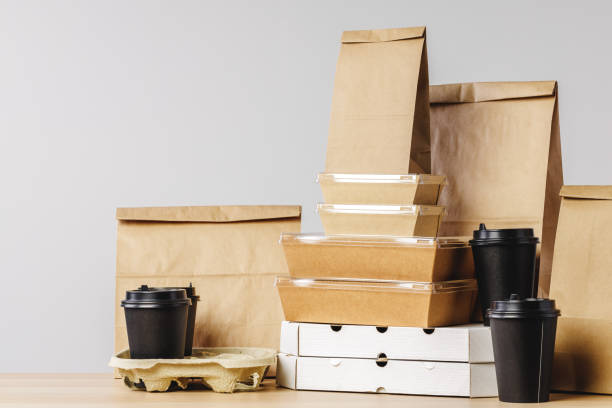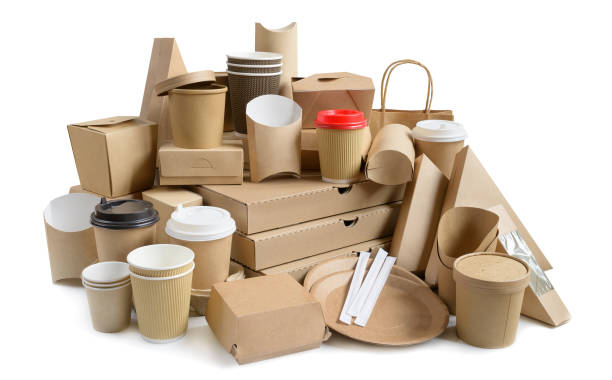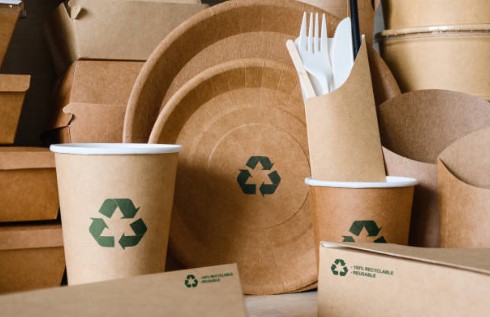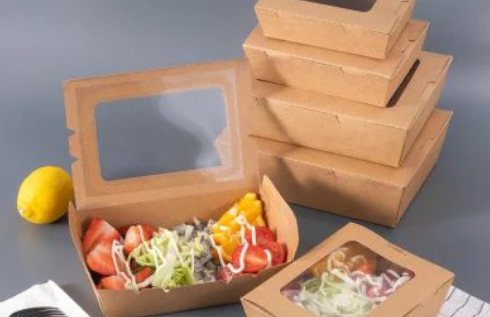
Introduction to Food Packaging in Modern Business
In today’s fast-paced world, the importance of food packaging cannot be overstated. It’s not just about wrapping food items; it’s a vital aspect of modern business. Packaging for food products serves multiple purposes, from ensuring food safety to branding and even playing a role in global trade. Ever wondered why food safety is important? Or what is the best way to protect food from deliberate tampering? The answers lie in the intricate world of food packaging. This guide will delve into the nuances of packaging food, its significance, and its impact on businesses and consumers alike.
Key Functions of Food Packaging
When we talk about the importance of food packaging, we’re not just referring to a container that holds your sandwich. Packaging serves multiple functions:
| Function | Description |
| Protection | The primary role of packaging is to act as a barrier against external factors, such as moisture, light, and oxygen, which can degrade the quality of the food. It also protects against physical damage during transportation. |
| Information | Packaging provides essential information to the consumer. This includes nutritional facts, ingredients, expiration dates, and cooking instructions. It helps consumers make informed choices about the food they consume. |
| Convenience | Packaging offers convenience in terms of portion sizes, easy opening, resealability, and disposability. It also facilitates efficient distribution and handling in the supply chain. |
| Branding & Marketing | Packaging plays a crucial role in branding. The design, colors, and logos help in product differentiation and can influence consumers’ purchasing decisions. It’s a tool for businesses to communicate their brand’s values and story. |
| Tamper Evidence | Certain packaging is designed to show visible signs of tampering, ensuring the safety and integrity of the food product. This builds trust with consumers. |
| Sustainability | Modern packaging often aims to be sustainable, either through recyclability, biodegradability, or the use of eco-friendly materials. This caters to the growing consumer demand for environmentally responsible products. |
| Portion Control | Packaging can help in portioning food, which can aid in dietary management and reduce food wastage. |
| Physical Containment | Foods need to be contained in some way to be handled efficiently. For instance, liquids need a container, and powders need sealing to prevent dispersal. |
| Atmosphere Control | Some foods require a controlled atmosphere to prolong shelf life. Packaging can help maintain specific gas compositions, like reduced oxygen levels, to keep food fresh. |
The Role of Packaging in Protecting and Preserving Food Quality
Food packaging is not merely a container to hold food; it’s a critical component in ensuring the quality and safety of the product from the time it’s packaged until it reaches the consumer’s plate. Here’s a more detailed breakdown:
- Barrier Protection: Packaging acts as a shield against external contaminants such as dust, insects, and microorganisms. It also protects food from environmental factors like light, moisture, and oxygen, all of which can degrade the quality of the food. For instance, vacuum-sealed bags prevent oxygen, a primary factor in food spoilage, from coming into contact with the product.
- Physical Protection: During transportation and handling, food products can be subjected to physical stresses like vibration, compression, and temperature fluctuations. Packaging provides the necessary cushioning and insulation to protect against physical damage and temperature extremes.
- Microbial Protection: Certain packaging materials have antimicrobial properties or can be treated to become antimicrobial. This helps in reducing the growth of pathogens and spoilage organisms, ensuring the food remains safe for consumption.
- Chemical Protection: Foods can react with their environment, leading to changes in flavor, color, and nutritional value. Packaging can prevent or reduce these unwanted chemical reactions. For example, a bag of chips is often flushed with nitrogen to prevent the oxidation of the oils.
- Gas Regulation: Modified Atmosphere Packaging (MAP) is a technique where the atmosphere inside the packaging is altered, often reducing the oxygen levels and increasing levels of gases like nitrogen or carbon dioxide. This can significantly extend the shelf life of perishable products like meat or fresh fruits.
- Moisture Regulation: Some foods require a specific moisture level to maintain their quality. Packaging can be designed to either retain moisture, as in the case of fresh produce, or keep it out, as with crispy snacks.
- Tamper Evidence: Packaging can be designed to show visible signs of tampering, ensuring the product inside hasn’t been compromised. This is especially important for ready-to-eat foods where tampering could pose serious health risks.
- UV Protection: Certain foods can degrade when exposed to UV light. Packaging materials can be designed to block or reduce UV exposure, preserving the quality and nutritional value of the food.
In essence, the role of packaging in protecting and preserving food quality is multifaceted and crucial. It ensures that the food we consume is not only tasty but also safe and nutritious. Proper packaging is a testament to the importance placed on health and well-being by food producers and distributors.

Material Matters: Commonly Used Materials in Food Packaging
| Material | Pros | Cons |
| Polyethylene | – Excellent moisture barrier. – Flexible and lightweight. – Resistant to chemicals and oils. | – Not biodegradable. – Can leach chemicals if exposed to high temperatures. |
| Paperboard | – Lightweight. – Recyclable and biodegradable. – Offers a printable surface for branding. | – Not suitable for wet products without a lining. – Can be less durable compared to other materials. |
| Glass | – Non-reactive with most substances. – Reusable and recyclable. – Preserves freshness and taste. | – Heavy, increasing transportation costs. – Fragile and can break easily. |
| Metal | – Provides a long shelf life. – Protects against light and oxygen. – Recyclable. | – Can react with acidic foods if not lined. – Heavier than other materials. |
| Polystyrene | – Lightweight. – Moisture-resistant. – Insulating properties, good for hot foods. | – Not commonly recycled, posing environmental concerns. – Can leach styrene, a potential carcinogen, when in contact with hot or acidic foods. |
| Aluminum Foil | – Excellent barrier against light, oxygen, and moisture. – Lightweight. – Can be recycled if cleaned properly. | – Can react with acidic or salty foods. – Not biodegradable. |
| Bioplastics | – Biodegradable and compostable. – Made from renewable resources. – Reduces carbon footprint compared to traditional plastics. | – Requires specific conditions to degrade. – Can be more expensive than traditional plastics. |
Each material comes with its own set of advantages and disadvantages, but all aim to ensure that food stays safe, fresh, and appealing to consumers.
What is Biodegradable and Compostable Packaging?
Biodegradable and compostable packaging are two environmentally friendly packaging options that naturally break down after use, reducing their impact on the environment.
Biodegradable Packaging:
- Definition: Biodegradable packaging is made from natural materials that can be broken down by microorganisms (like bacteria and fungi) into water, carbon dioxide, and biomass over a certain period.
- Characteristics: This type of packaging doesn’t leave long-term residues in the environment, but the time it takes to decompose can vary based on the material and environmental conditions.
- Raw Materials: Common materials include plant-based plastics (like PLA), natural fibers (like jute or hemp), and certain types of treated paper.
Compostable Packaging:
- Definition: Compostable packaging is a specific type of biodegradable packaging that can fully decompose in a composting environment.
- Characteristics: Not only does this packaging break down, but it also contributes organic matter to the soil, enhancing its fertility.
- Raw Materials: Materials often include corn starch, sugarcane, and other plant-based polymers. Some compostable packaging also incorporates edible materials or materials derived from food waste.

What are the benefits of using biodegradable or compostable packaging?
The shift towards biodegradable or compostable packaging is more than just a trend; it’s a necessity for a sustainable future. Here are some of the key benefits:
- Environmental Impact: Unlike traditional plastics, biodegradable and compostable materials break down naturally, reducing landfill waste and the associated environmental impact.
- Consumer Appeal: Eco-conscious consumers are more likely to choose products with sustainable packaging, giving businesses a competitive edge.
- Reduced Carbon Footprint: Biodegradable materials are often made from renewable resources, reducing the overall carbon footprint of the product.
- Regulatory Advantages: As governments worldwide impose stricter regulations on plastic use, switching to biodegradable or compostable options can help businesses stay ahead of the curve and avoid potential fines or sanctions.
- Resource Efficiency: Compostable packaging can be returned to the earth as soil, completing a natural cycle that is far more resource-efficient than the production and disposal of traditional plastics.
- Brand Image: Using sustainable packaging sends a strong message about a brand’s values and commitment to social responsibility, enhancing its image and appeal.
- Supply Chain Benefits: Biodegradable materials can often be locally sourced, reducing transportation emissions and supporting local economies.
By adopting biodegradable or compostable packaging, businesses not only contribute to environmental sustainability but also enjoy various strategic and economic benefits.
Sustainability and Eco-Friendly Packaging: Meeting Consumer Demands
In an era where sustainability is a buzzword, businesses can’t ignore the call for eco-friendly solutions. Recyclable packaging, reduced food waste, and minimal environmental impact are now at the forefront of consumer demands. The packaging food industry is pivoting towards materials that are not only safe for the food but also kind to our planet. From recyclable packaging to biodegradable options, the focus is on reducing the carbon footprint. After all, what’s the point of having the best packaging if it harms the environment?
Branding and Design: How Packaging Influences Consumer Choices
Ever picked a product off the shelf simply because it looked appealing? That’s the power of branding and design in food packaging. It’s not just about protection; it’s about presentation. Cool food packaging designs can make a product stand out, influencing consumer choices and driving sales. The colors, typography, and even the shape of the packaging play a role in capturing the consumer’s attention. In a competitive market, packaging can be the differentiator, making it an essential aspect of the food business.
Legal and Regulatory Aspects: Labeling and Compliance
The food and drug administration, along with other regulatory bodies, has set guidelines for food packaging. It’s not just about keeping the food safe; it’s about informing the consumer. Proper labeling, including nutritional information, expiration dates, and any allergens, is mandatory. Compliance ensures that consumers are well-informed about what they’re consuming. It also protects businesses from potential legal pitfalls. After all, transparency builds trust.
Innovations in Food Packaging: Trends to Watch in 2023 and Beyond
The world of food packaging is ever-evolving, with innovations driven by technology, consumer demands, and environmental concerns. As we step into 2023, some trends are reshaping the packaging food industry. Smart packaging, for instance, integrates technology to inform consumers about the freshness of the product or even if it has been tampered with. Why is food safety important? Because it directly impacts health. Innovations aim to ensure that every food item reaching the consumer is of the highest quality. From edible packaging to AI-driven design choices, the future of food packaging is exciting and promises a blend of safety, sustainability, and aesthetics.
The Economic Impact: How Packaging Affects the Bottom Line
It’s not just about wrapping food; it’s about the economics of the business. Poor packaging can lead to increased food waste, returns, and even lost customers. On the other hand, investing in quality packaging can enhance shelf life, reduce returns, and even drive sales through attractive branding. The packaging’s purpose isn’t just protective; it’s also promotional. Businesses need to strike a balance between cost-effectiveness and quality to ensure profitability in the long run.
Consumer Safety: Ensuring Products are Free from Contaminants
One of the primary roles of food packaging is to protect the contents from contamination. Whether it’s pathogens, chemicals, or physical contaminants, packaging acts as the first line of defense. The importance of food packaging in ensuring safety cannot be stressed enough. From the choice of materials to the sealing process, every step plays a vital role in ensuring that the food inside is safe for consumption. After all, a single mishap can not only harm consumers but also tarnish a brand’s reputation.
The Role of Packaging in Reducing Food Waste and Loss
Food waste is a global concern. One of the ways to combat this issue is through effective packaging. By extending the shelf life of a food product, packaging reduces the chances of it going to waste. Moreover, sturdy packaging ensures that food items aren’t damaged during shipping or handling, further reducing losses. In essence, packaging plays a dual role – protecting the food and the planet.
Global Supply Chain: How Packaging Facilitates International Trade
In our globalized world, food products often travel thousands of miles before reaching consumers. Packaging ensures that these products remain fresh and intact throughout their journey. Whether it’s packaging food for shipping across continents or ensuring that the packed food items meet international standards, packaging is the unsung hero of the global food trade.

How do businesses choose the right packaging material for different food products?
Choosing the right packaging material is a critical decision for any business in the food industry. It’s a balancing act between several factors, each with its own set of challenges and benefits. Here’s how businesses typically go about making this crucial choice:
- Type of Food: The nature of the food product is the first consideration. For instance, liquid foods like juices may require glass or plastic bottles, while dry foods like cereals are often best suited for paperboard boxes.
- Shelf Life Requirements: Some foods are perishable and require packaging that offers excellent barrier properties against moisture, light, and oxygen. In such cases, materials like aluminum foil or polyethylene are often chosen.
- Sustainability Goals: With increasing consumer demand for eco-friendly products, businesses are leaning towards sustainable options like bioplastics or recyclable paperboard.
- Cost Considerations: While glass and metal offer excellent protective qualities, they are often more expensive and heavier, impacting transportation costs. Businesses must weigh these costs against the benefits.
- Consumer Preferences: The packaging material should also align with what the consumer expects. For example, organic or health foods are often expected to have eco-friendly packaging.
- Regulatory Compliance: Food packaging must meet various safety and quality standards. Businesses must ensure that the materials they choose are compliant with these regulations.
- Branding and Marketing: The material should offer a good surface for printing to ensure that branding and essential information are clearly visible.
By carefully considering these factors, businesses can make informed decisions that align with their goals, consumer expectations, and regulatory requirements.
Why Choose Yoon?

- Tailored for the Food Industry
At Yoon, we understand the unique needs of the food industry. With 19 years of experience, we’ve honed our craft to provide you with sustainable, high-quality paper cups and food containers that resonate with your brand’s values.
- Sustainability at Its Core
Our green philosophy isn’t just a tagline; it’s a commitment. We exclusively use paperboard made from virgin fibers sourced from sustainably managed renewable plantations. Our printing is done using only food-grade inks, ensuring safety and sustainability in every cup.
- High Production Capacity
With a 16,000 m2 production hall and an annual cups production of 15 billion, we have the capacity to meet your demands, no matter how large or small. Our team of over 200 skilled craftsmen ensures that each cup meets our rigorous quality standards.
- Customization and Branding
We offer bespoke solutions tailored to your brand. From paper cups with your logo to custom designs, we go the extra cup to make sure your brand stands out. Our creative minds work diligently to keep your brand strong, cohesive, and bold.
- Exceptional Customer Service
Customer service is not just a department; it’s our ethos. Our dedicated team, from the CEO to the Sales Manager and Merchandiser, is committed to providing you with high-quality service and innovative products. We’re here to fulfill your needs, answer your questions, and ensure your satisfaction.
- Technology-Driven
Our state-of-the-art factory utilizes cutting-edge technology to fulfill your orders efficiently and effectively. This ensures that you receive your products on time, every time.
- A Partner You Can Trust
With Yoon, you’re not just choosing a supplier; you’re choosing a partner committed to your success. We’re here to support you in making a positive impact on both your customers and the planet.
Choosing Yoon is choosing quality, sustainability, and a partner committed to your success. Let’s make a powerful statement together, one cup at a time. Contact Yoon Today!
Conclusion: The Future of Food Packaging for Businesses
So, what’s the takeaway? The importance of food packaging in modern business is multi-faceted. It’s not just about wrapping food; it’s about ensuring safety, enhancing shelf life, meeting legal requirements, and even making a product more appealing to consumers. As we move forward, the trends in food packaging are likely to be driven by technology, sustainability, and consumer preferences. Businesses that adapt to these changes are not only going to survive but thrive.







